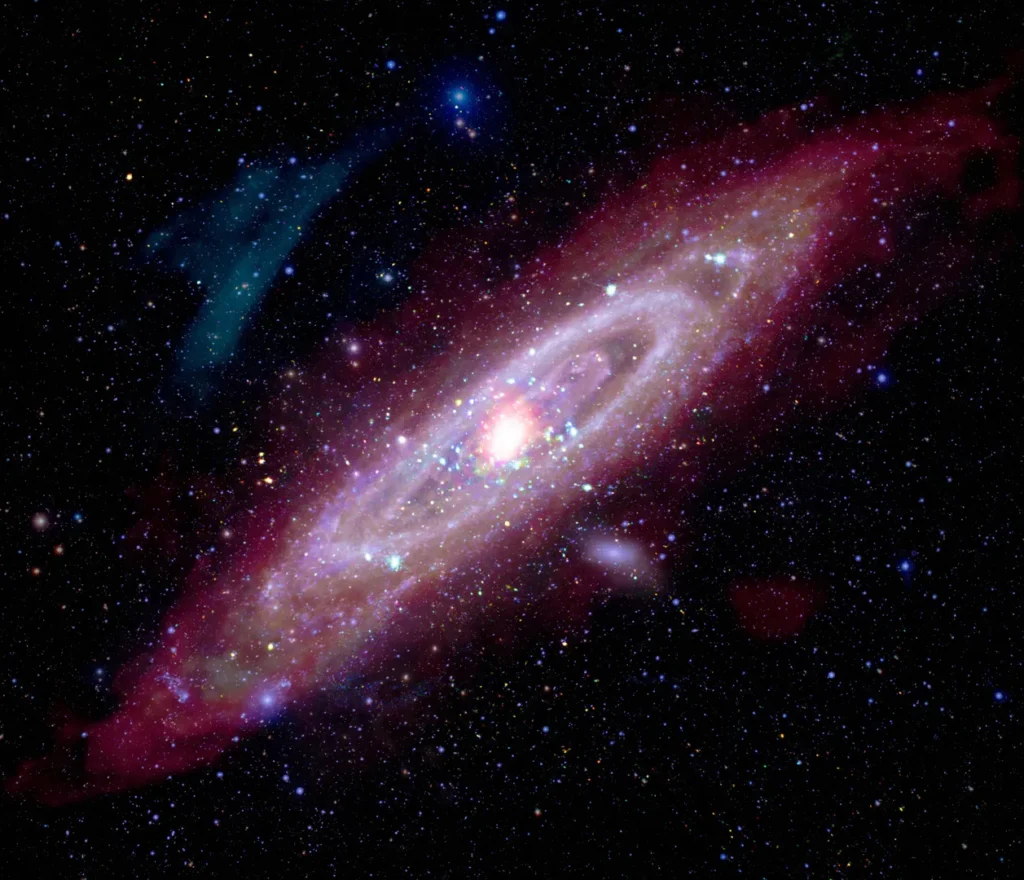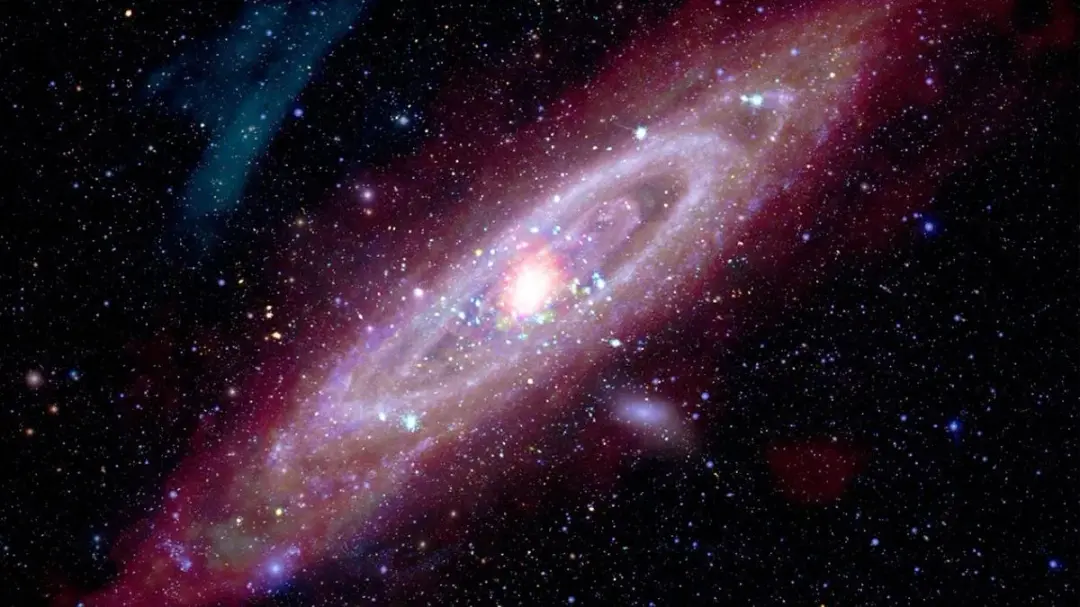NASA has published a unique photo of the Andromeda Galaxy (M31). The image was created by combining data from numerous ground-based and space telescopes, showing Andromeda in unprecedented detail and across multiple wavelengths—from X-rays to ultraviolet, visible light, infrared, and radio waves.

Photo: Facebook/Chandra X-ray Observatory
The Andromeda Galaxy, located about 2.5 million light-years away, is the largest and closest major spiral galaxy to Earth. Its structure resembles the Milky Way, making it an extremely important object for research on the evolution and structure of galaxies. It was thanks to observations of M31 in the 1960s that scientists made a breakthrough in the study of dark matter.
Andromeda is the most distant object in the universe that, under favorable conditions, can be seen with the naked eye. In a dark, cloudless sky, far from city lights, it is visible as a subtle mist. An even better effect can be achieved with binoculars, even from Poland, especially in the fall.
Interest in Andromeda is not solely due to its beauty. In about 4 billion years, this galaxy will collide with our Milky Way, giving rise to a new, larger galactic system.
Source: Science in Poland, NASA










